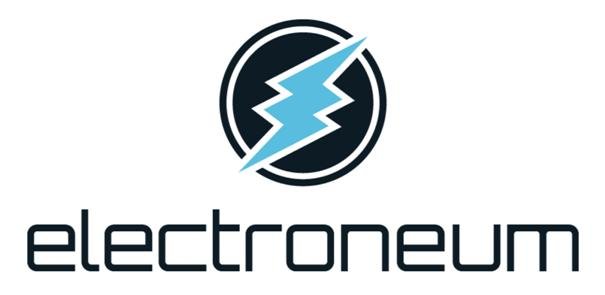
Electroneum is a cryptocurrency that launched back in 2017 to some serious fanfare. The British-based project impressed more than 300 thousand early investors, promising to make strong moves into the industries of mobile gaming, online gambling, as well as general payment processing. Some of those investors were swayed by project’s unique features which were supposed to include Electroneum being a mobile-focused cryptocurrency that would run on an ASIC-resistant version of CryptoNight hash algorithm (originally used by Monero).
As such, Electroneum planned to offer two types of mining on the platform: GPU and mobile. These plans have currently been shelved, as the modified CryptoNight V7 ASIC-resistant algorithm led to the network getting overpowered by malicious GPU miners who mined the coin in waves and caused inconsistent block times and long delays in transactions. Several sources suggest that Electroneum doesn’t plan to waste further development resources on CryptoNightV7, as they have apparently embraced ASIC mining for good.
What you'll learn 👉
Types of Electroneum mining
In January 2020, ETN made cosmetic changes to their “mobile mining” system.
They renamed the mobile mining into Electroneum Rewards – ETN Rewards. They will essentially give out $3 per user every month for interacting with their app. They are essentially mining, but not coins but your data. And, I would assume, just sell your data to advertisers and make money of the desperate holders, again.
As of this moment, GPU/CPU mining on the Electroneum network is pretty much obsolete. The rewards that come with non-ASIC hardware mining won’t even be enough to cover your electricity expenses. That being said, Electroneum currently offers two types of mining, one fake (mobile) and the other real (ASIC).
“Fake” mining – ETN Mobile Miner
Mobile mining is a feature that enables smartphone users to “mine” ETN cryptocurrency by simply downloading the Electroneum mining app on their device. This isn’t mining in the actual sense of the word but rather a glorified airdrop, which regularly sends a certain amount of ETN to anyone who has installed the mobile app.
“The miner runs in the background and consumes virtually no processing power, battery life, or data. Mined coins are paid out regularly and users can spend them immediately from the app at a growing list of online and offline stores that accept ETN as payment,” the project explains how this “mining” works.
The feature is meant to enable and attract the world of unbanked and technologically limited. At the moment, there are cca. 2.2 billion smartphone owners out there who can be placed into one or both of those groups. However Electroneum recently announced its intention to become KYC compliant, which will significantly limit their market penetration.
Mining Electroneum on a smartphone is fairly straightforward:
- Download the app to your device and create an account on the Electroneum website
- Log into the app using your credentials
- Go to the Miner tab at the bottom and click the Start Mining button
How exactly your “gains” are determined is a bit complicated. Apparently the app doesn’t measure your CPU’s contribution to solving complicated cryptographic problems but rather determines the amount of CPU power that could have been used for mining, had the phone actually been mining. Your app is then credited with an amount of ETN that reflects your imaginary hash rate and your tokens are paid out monthly. In reality, a couple of additional factors will affect how much you’ll earn by mining Electroneum:
- the amount of Electroneum transactions being performed worldwide
- the number of active miners worldwide
- the current exchange rate of Electroneum
Mobile mining ETN is paid out of a pool that the project set up specifically for that purpose. The team reserves the right to adjust the mining rate to stimulate user growth; something like this happened recently when Electroneum re-adjusted their minimum payments from 10 ETN to 100 ETN. While this will likely reduce the blockchain traffic and enable Electroneum to scale better/grow faster, many community members weren’t too happy with the fact that they now have to wait a lot longer for their payout.
Electroneum mobile mining is currently available on Android and has recently been released for closed beta testing on iOS. Many users are reporting that their ETN rewards from application “mining” don’t even go over 1 ETN ($0.006530 at the moment of writing), meaning that you’ll probably waste a lot more resources then you’ll earn by running the mining application. Electroneum plans to shift the mobile mining onto the cloud in the future, to ensure that the process is more fair and consistent. This will first be implemented onto the iOS phones, with Android Electroneum cloud mining release set to come afterwards.
This mining experience has clearly been designed to encourage wider adoption of ETN cryptocurrency. It’s not real in the sense that your device is solving computational problems and adding blocks to the blockchain; it operates more like a faucet or an airdrop, providing a steady stream of currency loosely based on your phone’s hashing power. Mobile app users and ETN holders were then encouraged to take advantage of the significant mining speed and coin emission improvements that come with the Windows, Mac or Linux GUI miner and now ASIC miners.
The project claims that this will enable Electroneum to grow to huge user numbers via the app, whilst still retaining a significant mining community on the transactional blockchain by running the Windows, Mac or Linux application. You can download a Windows/Mac/Linux direct miner from here and follow the steps below to start mining/running a node on your PC:
- Download the ZIP file
- Open the electroneumd.exe
- Wait for your node to sync with the blockchain
- Once your node is synced you can start mining to an existing wallet address or create a new wallet
Alternatively, you can use xmr-stak – open-source mining software that runs on the command line and supports both CPU and GPU mining. You can find a complete tutorial on how to set that software up here.
Real mining
ASIC mining was re-introduced onto the Electroneum blockchain back in July 2018, when the project reverted away from CryptoNight V7 to its original CryptoNight Proof of Work algorithm. CryptoNight was originally designed for Monero and was meant to make CPU and GPU mining roughly equally efficient to ASIC mining; ASIC chips have since evolved and the algorithm’s ASIC resistance has been “broken”, rendering any attempts to mine with your processor/graphics card very unprofitable. While Electroneum cited ASIC resistance as one of its original missions/goals, the project’s priority currently seem to be blockchain stability and constant block averages, which are highly dependent on ASIC devices being present and providing their superior hash power to the chain.
Therefore, using any CryptoNight capable ASIC miner to mine Electroneum is your best bet. Devices like Bitmain’s Antminer X3 (220-300kh/s), Innosilicon A8+ (240 to 340kh/s) or cheaper BaikalMiner’s BK-N70 (40kh/s) are seemingly the most popular options in the Electroneum mining community. As for where to mine, your best bet is to join a pool like HeroMiners of SpacePools. Both offer Electroneum pool mining and offer decent tutorials explaining how to get started with the mining process.
How much will you earn?
Website whattomine.com offers calculators for most of the coins that can currently be mined.You can find theirETN calculator at this link. The calculator will give you a rough estimate of what you’ll earn, but the values generally won’t deviate much from the numbers it gives you.
The calculator will require you to enter the following parameters:
- Hash rate: Enter your total speed (in hashes per second) for all of your mining computers. This would be the “total speed” value in your mining software. Miners recommend using the 15 minute total speed as this gives you a legitimate average value.
- Power: Enter the total amount of power (in watts) that your mining rig is using.
- Cost: Enter the cost per kilowatt hour that you pay to your electricity company. You’ll have to consult either your electricity company or look at the info in your monthly bill to find this information.
- Pool fee: Enter the pool fee + the miner software dev. fee.
- Hardware cost: Enter in the total cost of all of your hardware.
Look at the Difficulty 24h and the Difficulty 7 days rows on the left side of your screen. You want them to be around the same, as this means that all the further calculations will be accurate for days to come (as long as the price remains stable).
Look at the EX. volume 24h and the Market Cap. Generally, the bigger these are, the less of a potential there is for the price to become volatile. We want the price to not be volatile so our calculations will be accurate for days to come.
Most importantly, you’ll need to look at the Create 1 BTC in and the Break even in rows. These will give you clear information regarding how long it will take your mining rig to create 1 BTC and will also show you a rough estimate of how long it would take to pay off your mining rig by mining this particular coin. Both of these are crucial for you to figure out if and when your mining endeavor will actually become profitable.
In conclusion
God’s honest truth is that Electroneum probably isn’t the best cryptocurrency for you to mine at the moment. For example, if you were to purchase the Antminer X3 and put it to work on mining ETN right now, the miner would create you 1 whole BTC worth of tokens in 2662 days. That’s 7 years for your first $3.5 thousand. Even worse, you’d break even in 68,396 days, or two lifetimes.
In reality, there are many more cryptocurrencies, like the current miner’s darling Grin, which would be a much better choice to aim your hashing power at. Still, that doesn’t mean that you shouldn’t bookmark this guide and use it to set up your ETN mining operation sometime in the future, when and if the market is right for that.







